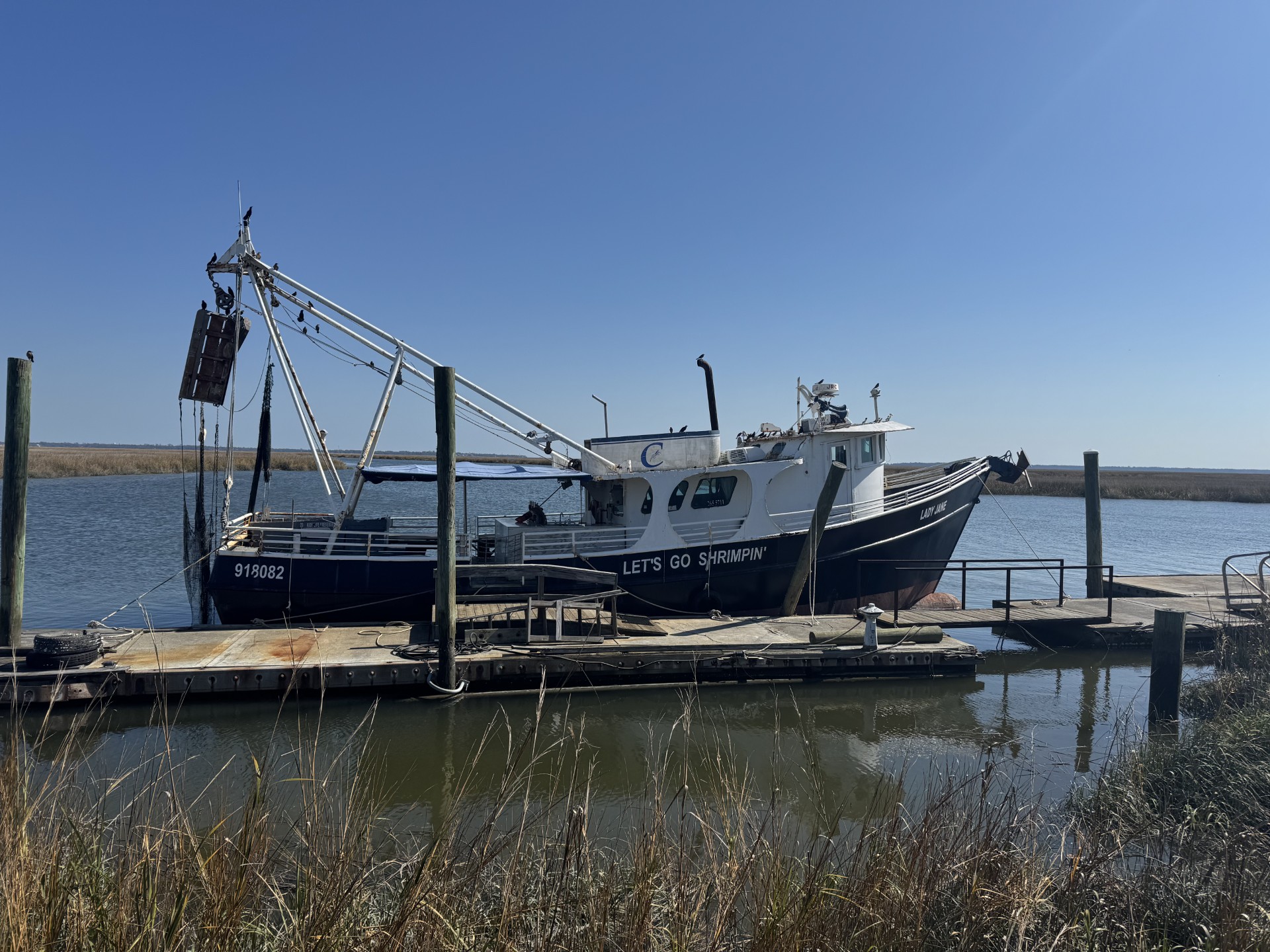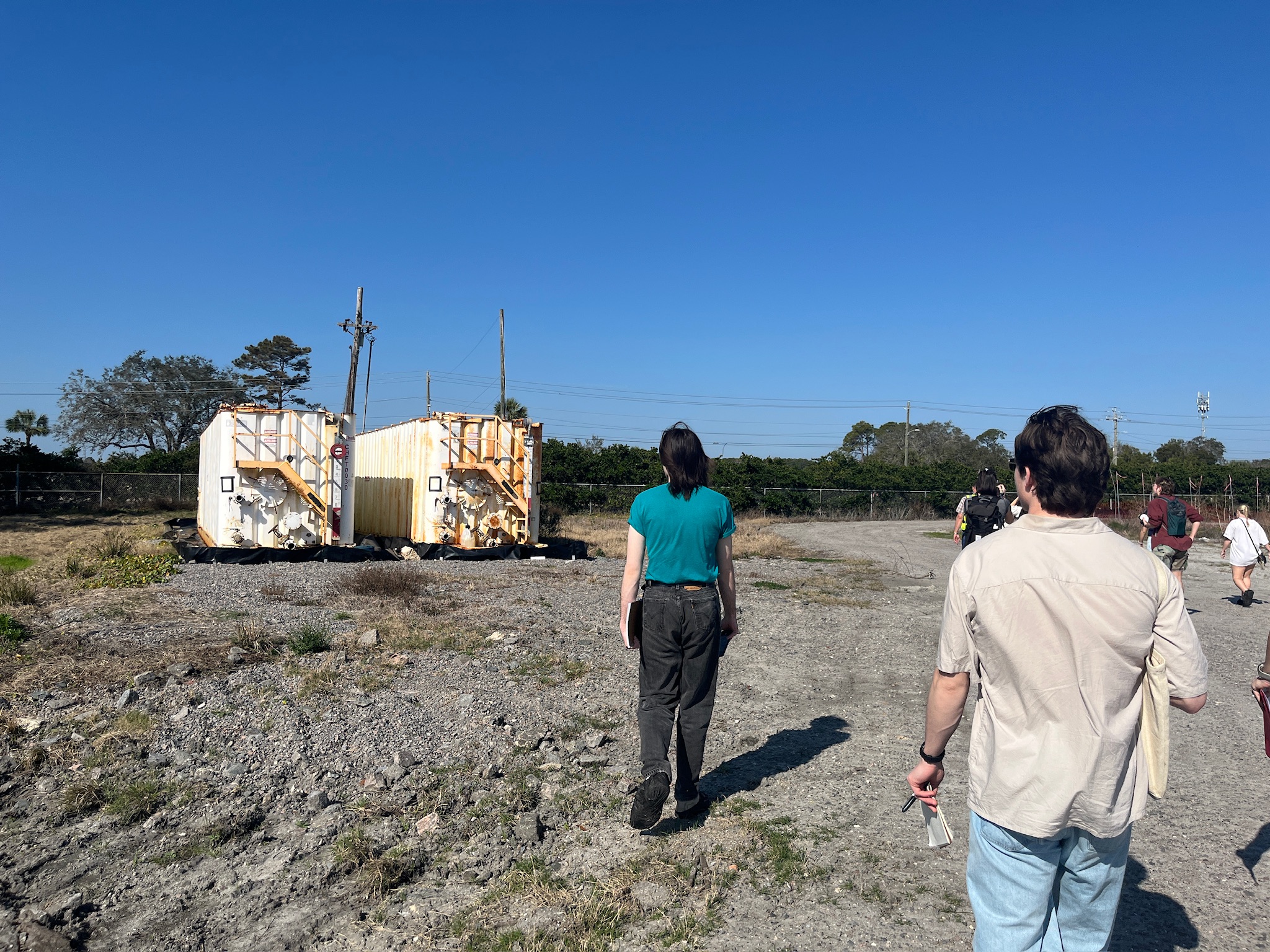On a bright, 80 degrees and sunny February day, 12 senior landscape architecture students made their way around the coastal city of Brunswick, Georgia.
Though perhaps not as famous as its sistering communities of St. Simons Island and Jekyll Island, the mainland city of 15,000 has plenty to boast. It’s richly steeped in history, as a key location on the Gulluh Geechee Cultural Heritage Corridor, an established port since 1789 and perhaps most famous, the apparent origin of Brunswick Stew. It has a thriving riparian and coastal ecosystem and is known as the “Gateway of the Golden Isles.”
Many of the students had spent the previous semester in studio with College of Environment and Design alum and instructor Carley Rickles (BLA ‘15) prepping for their capstone project in Brunswick.
“I think part of why [we chose Brunswick] is because it’s a city on the coast,” said instructor Rickles. “Our coasts in Georgia are protected, which is not usual these days in the US.”
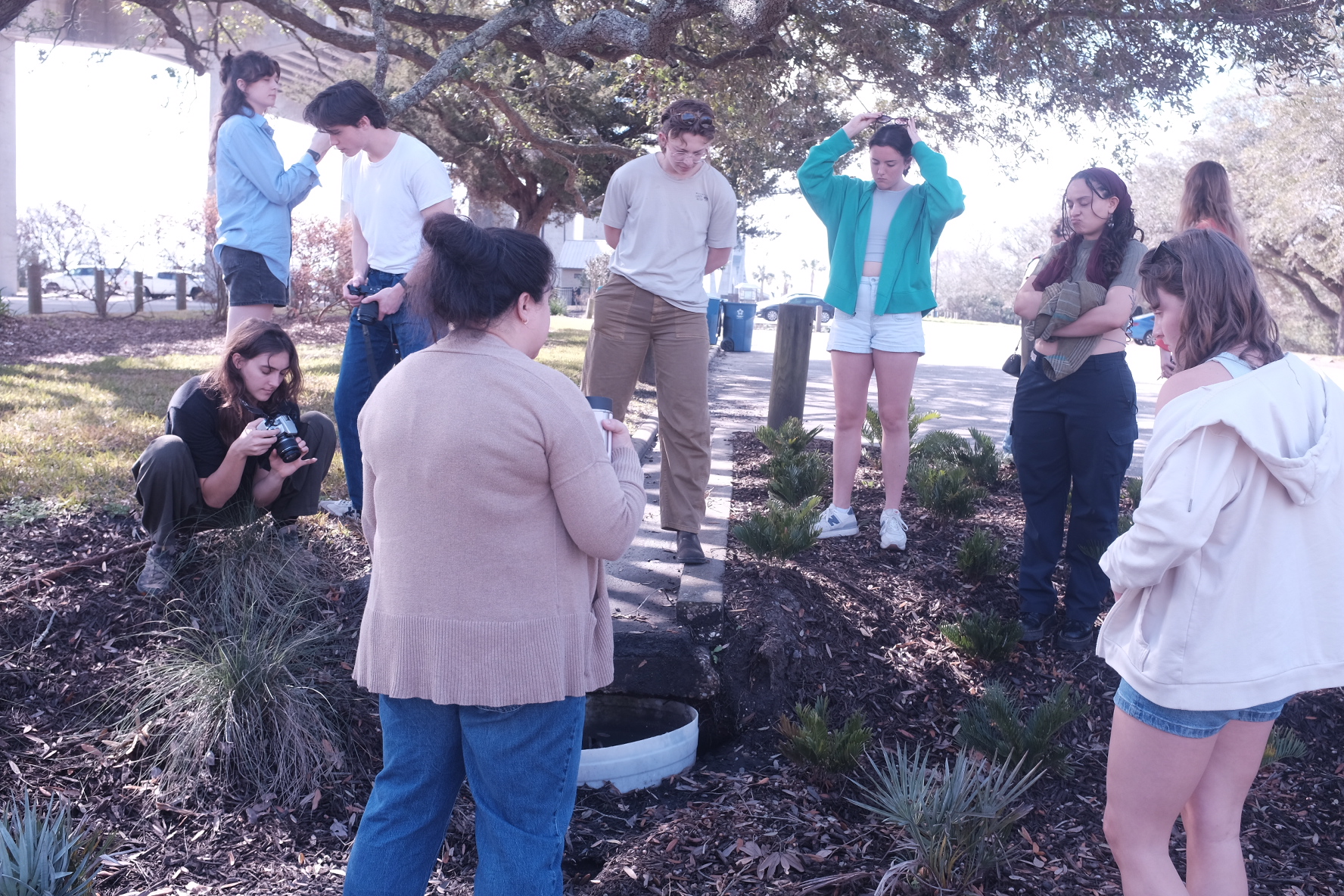
However, underneath the coastal charm are issues residents experience every day. There’s stagnant socioeconomic and population growth, and due to its low coastal elevation, the city is prone to flooding, from storms and rising sea levels. Perhaps most concerning to residents is the city’s industrial scars, which left behind four contaminated EPA Superfund sites.
Over the course of the spring semester, the students brainstormed design solutions for these issues at two different 100-acre sites: the Glynn Avenue Corridor and Hercules/Pinova. To guide their project, they were tasked to come up with a research question to guide their design, and a focus area within the site to develop into more detail.
“I think the capstone is partially about showing what you have learned, but it’s also your last chance to be a student,” said Rickles. “Some will go on and do more school, but it’s your last chance to have this like experimental laboratory kind of case.”
To help students develop a holistic understanding of the problems the community of Brunswick was facing, the class met with a number of community representatives in Brunswick, including the Glynn Environmental Coalition, the Brunswick African American Cultural Center, The UGA Marine Extension and Georgia Sea Grant Stormwater Program, the architecture firm Gresham Smith and 100 Miles, a coastal nonprofit.
In Rickles’ Fall 2024 studio, the students prepped for the Brunswick project and learned competition format. At the end of the spring semester, all 12 students submitted their capstone for awards consideration to the American Society of Landscape Architects.
“I had a lot of these students their entire third year, too,” said Rickles. “I definitely got to see them grow and change, which was really cool. I think that for the most part, I definitely saw everyone’s presentation quality improve.”
Caleb Butcher, BLA ‘25, wasn’t in the fall studio, but worked on one of the studio’s projects during his free time and was able to join in the spring for the Brunswick project.
“Working with Professor Rickles is consistently an exercise in comfort zone expansion,” said Butcher. “This capstone forced me to ask bigger questions about what is possible in the landscape, as well as how to best present it narratively. The competition orientation of the studio led to frequent presentation of work that I thought was the farthest I could take it, and then reworking, expanding, and graphically representing it better.”
Learn more about our student projects by clicking below!
Site 1: Glynn Avenue Corridor
The first site, Glynn Avenue Corridor, is a strip of land along US Highway 17 that connects Brunswick to the nearby Jekyll Island and St. Simons Island. Despite being a “high visibility” corridor that leads into the city, it is a deteriorating commercial area, but not without high potential for renewal.
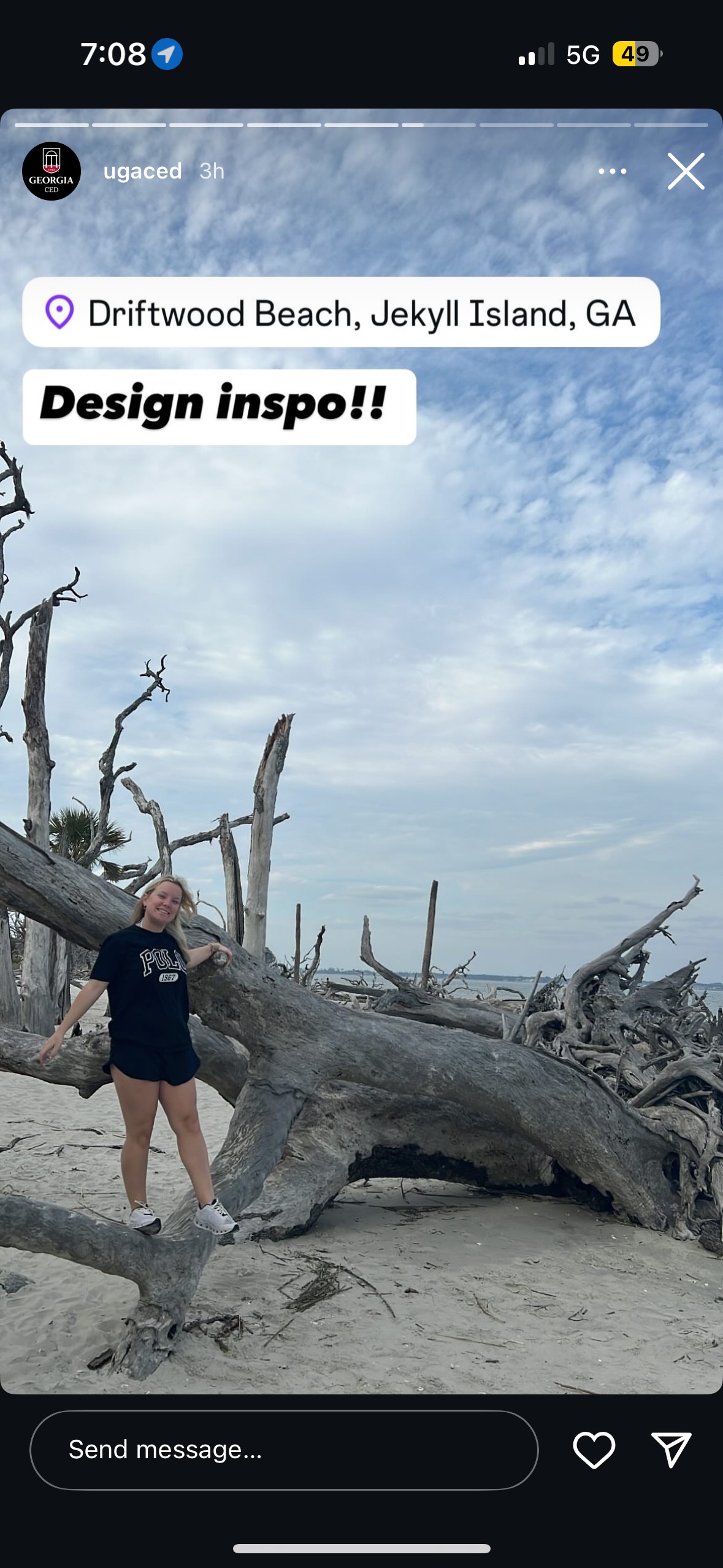 “It’s more of a linear site,” said Rickles. “I think I was interested in it because it connected green space both on the coast and on the other side of the street to more commercial residential, and there was also a brownfield site.”
“It’s more of a linear site,” said Rickles. “I think I was interested in it because it connected green space both on the coast and on the other side of the street to more commercial residential, and there was also a brownfield site.”
Five students worked on this site, including Tatum Michael, BLA ’25. In her project, “Shaping Ecological Tourism,” Michael explored the question “How can Brunswick, Georgia and the marshland benefit from certain coastal tourism?”
“As I learned more and more about the community of Brunswick and our site in particular, it was very hard to pick a starting point about what exactly I wanted to impact with my design,” said Michael. “Eventually, I felt that settling on ecological tourism addressed the most of what I wanted to make happen in my capstone.
In her capstone design, Michael created a park circuit combining different types of outdoor landscapes around the corridor. Some of these landscapes included a botanical garden, pavilion centers, a playscape, recreational areas and a greenway to link them all.
“The main thing that became my focus area was inspired by the history of Brunswick and what mattered most to the people in the community,” said Michael. “Mending that with bringing in tourism to the community inspired the idea of a multi-purpose park circuit. I chose this in order to accomplish celebration and remembrance while also bringing in ecological and tourism benefits.”
In her park circuit, Michael made sure to integrate the area’s history with the design, highlighting the Gullah-Geechee heritage of the site, landmarks like the First African Baptist Church and Lanier’s Oak, and planting native plants.
“Some of the most influential people we talked to were unprompted members of the community,” said Michael. “When we saw someone fishing off the Glynn Corridor side of the marsh, we were able to ask him true opinions and how he felt about certain things as a member of the Brunswick community for over 30 years.”
While ecological tourism was the focus of her design, Michael also made sure to lean into the commercial side of the corridor, writing in a small business initiative into her plans and making commercial spaces easily accessible to the park corridor.
“The most rewarding and bittersweet moment was hanging it up in the Circle Gallery,” said Michael. “This was my last assignment, and I was incredibly proud of the finished product. To be able to see all of my hard work and everything I have learned in the last four years, and especially in my last year on paper, was incredibly rewarding.”
View Tatum’s site design here.
Site 2: Hercules/Pinova
The seven students who chose the second site, Hercules/Pinova, had to design from the ground up– literally.
Hercules/Pinova is a graveyard of the manufacturing past. The facility, originally owned by the chemical manufacturer Hercules Inc., produced the pesticide toxaphene from 1946 to 1980. In 2010, the resin manufacturer Pinova operated the site, until a fire permanently shut down operations in 2023. Following the fire, all structures on the property were demolished.
“When the property owners decommissioned the site, they demolished all the buildings, which we didn’t realize at the time,” said Rickles. “There’s no such thing as a blank slate, but there were no structures.”
No structures lent the site designs to be more creative and experimental in nature. However, there were still serious considerations to weigh into the design proposals.
In 1984, the site was added to the EPA Superfund list due to the heavy presence of toxaphene in the soil, groundwater, environment and wildlife surrounding the site. Toxaphene is known to cause nervous system, liver and kidney damage in humans.
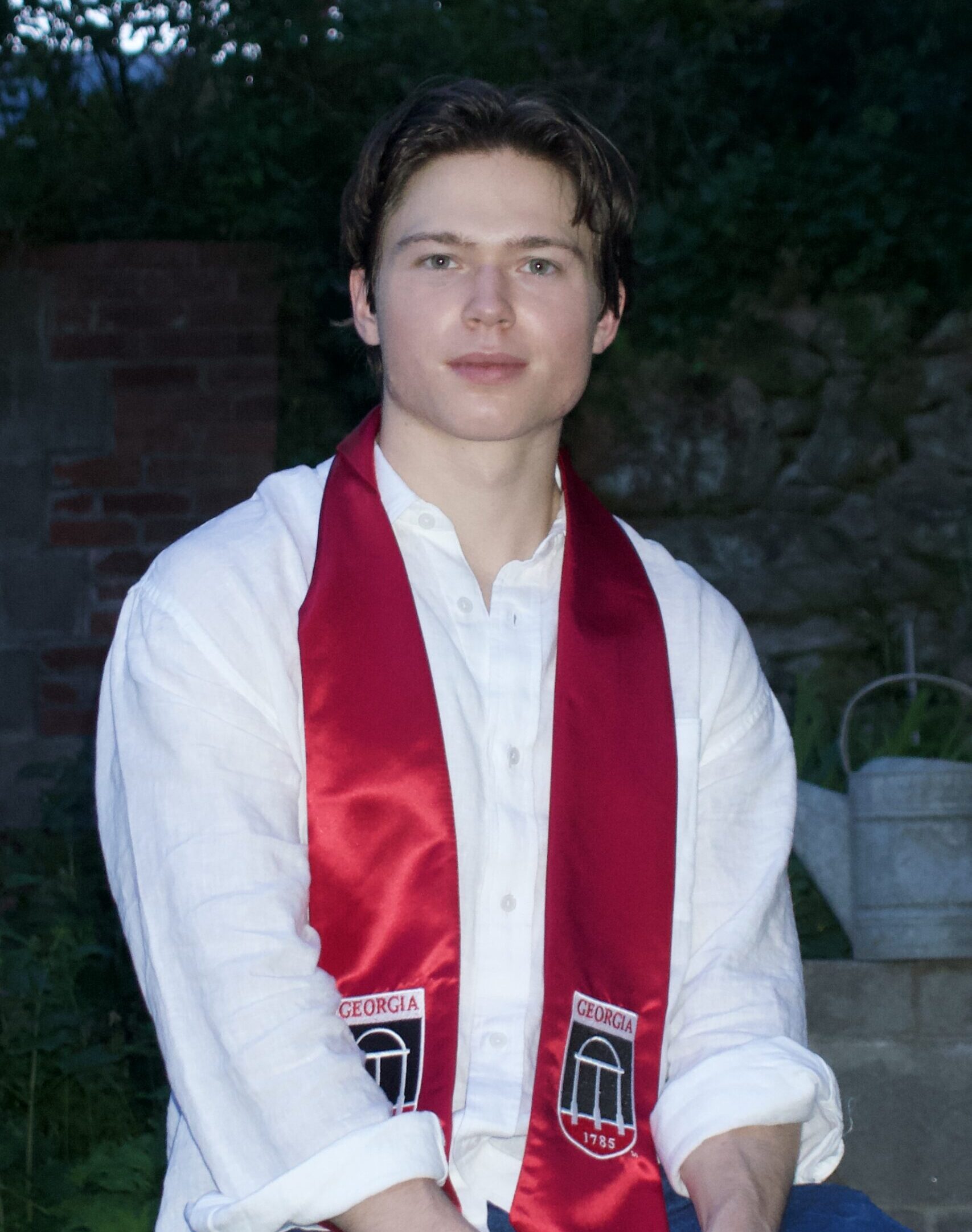 Caleb Butcher, BLA ‘25, addressed these concerns in his capstone design, “Soundscape Healing Landscapes,” following conversations with residents who lived near the site.
Caleb Butcher, BLA ‘25, addressed these concerns in his capstone design, “Soundscape Healing Landscapes,” following conversations with residents who lived near the site.
“[The conversations] opened the door to me on how I could use the soundscape as a metric to determine a remediated site both environmentally, but also socially,” said Butcher. “To me, showcasing a future on the site that gave back to a community that has all but lost hope was a powerful driving factor to creating a comprehensive and detailed design that addressed their concerns and more.”
Butcher built his site design around soundscapes, which are the acoustic environments of a place. By using sound as a metric to assess the health of a landscape, he aimed to reduce unwanted sounds and introduce wanted sounds into the location.
“Music and sounds are something that have always been really important to me…,” said Butcher. “It’s a language I want to understand and figure out how it can be spoken in landscape design.”
To develop metrics, Butcher did a soundscape analysis of the site during the Brunswick field visit. He recorded the decibel levels of different locations around the site, charted the different bird species and calls, and wrote down his own observations of the acoustics.
From his observations, he then developed an intervention to improve the acoustic environment of the site. The intervention includes an expanded marsh to diversify and enhance natural sounds, increased ground cover and trees, a wind meadow and park installations designed for reflection and transparency.
“I wanted to illuminate moments where remediation occurred,” said Butcher. “Bringing the sound of the machinery to the forefront and letting a fully remediated site signal its health through bringing people into the space for play, exploration, and housing.
View Caleb’s site design here.


